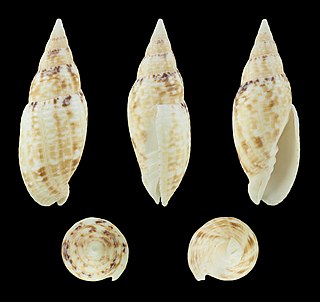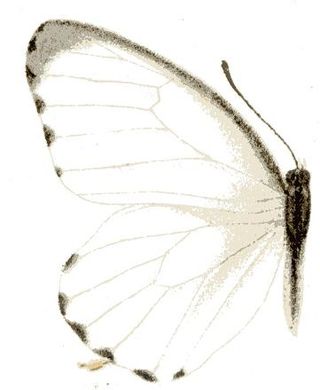The Worshipful Company of Coachmakers and Coach Harness Makers is one of the Livery Companies of the City of London. An organisation of Coachmakers and Wheelwrights petitioned for incorporation in 1630. The petition was granted almost fifty years later, in 1677, when a Royal Charter was granted to the Coachmakers. As coaches have been replaced by cars, the Coachmakers' and Coach Harness Makers' Company has lost its role as a body responsible for controlling the quality of coaches. Instead, it promotes the automobile industry, and also supports various charities.

The blue iguana, also known as the Grand Cayman ground iguana, Grand Cayman blue iguana or Cayman Island rock iguana, is an endangered species of lizard which is endemic to the island of Grand Cayman. It was previously considered to be a subspecies of the Cuban iguana, Cyclura nubila, but in a 2004 article Frederic J. Burton reclassified it as a separate species because according to him the genetic differences discovered four years earlier between the different C. nubila populations warranted this interpretation. The blue iguana is one of the longest-living species of lizard.

Such Is Life is a 1939 Argentine melodrama film directed by Francisco Múgica and starring Enrique Muiño, Elías Alippi, Enrique Serrano and Sabina Olmos. Based on a successful play by Nicolás de las Llanderas and Arnaldo Malfatti, it focuses on the history of a bourgeois family from Buenos Aires from the beginning of the 20th century to the present.

The Cuban rock iguana, also known as the Cuban ground iguana or Cuban iguana, is a species of lizard of the iguana family. It is the second largest of the West Indian rock iguanas, one of the most endangered groups of lizards. A herbivorous species with a thick tail and spiked jowls, it is one of the largest lizards in the Caribbean.

Cyclura nubila caymanensis, the Lesser Caymans iguana, Cayman Brac iguana, Cayman Island brown iguana or Sister Isles iguana, is a critically endangered subspecies of the Cuban iguana. It is native to two islands to the south of Cuba: Cayman Brac and Little Cayman, which are also known as the Sister Isles due to their similar shapes and close proximity to each other. The population of this subspecies has been impacted by habitat encroachment by human development and is likely being destroyed due to predation by cats, the population on Cayman Brac has remained particularly small for decades.

Schinia nubila, the camphorweed flower moth or brown flower moth, is a moth of the family Noctuidae. The species was first described by Herman Strecker in 1876. It is found from the US states of Oklahoma to New Jersey, south to Florida and Texas. Its range is expanding in the northeast. Furthermore, recorded from Colorado, Kansas, Oklahoma, Arkansas, North Carolina, South Carolina and Maryland.

Heliothis nubila is a species of moth of the family Noctuidae, described by George Hampson in 1903. It is found in Burkina Faso, the Gambia, Ghana, Guinea, Mauritania, Niger, Nigeria and Senegal.

Quasimitra nubila, common name the particolored mitre, is a species of sea snail, a marine gastropod mollusk in the family Mitridae, the miters or miter snails.

Mylothris nubila is a butterfly in the family Pieridae. It is found in Cameroon, Gabon, São Tomé and Príncipe, the Democratic Republic of the Congo and Uganda.
Dystasia is a genus of longhorn beetles of the subfamily Lamiinae, containing the following species:
Dystasia javanica is a species of beetle in the family Cerambycidae. It was described by Stephan von Breuning in 1938.
Dystasia proxima is a species of beetle in the family Cerambycidae. It was described by Stephan von Breuning in 1938. It is known from Borneo.
Dystasia subcristata is a species of beetle in the family Cerambycidae. It was described by Stephan von Breuning in 1938.
Dystasia bella is a species of beetle in the family Cerambycidae. It was described by Stephan von Breuning in 1940.
Dystasia chassoti is a species of beetle in the family Cerambycidae. It was described by Stephan von Breuning in 1973.
Dystasia laterivitta is a species of beetle in the family Cerambycidae. It was described by Stephan von Breuning in 1942.
Dystasia semicana is a species of beetle in the family Cerambycidae. It was described by Francis Polkinghorne Pascoe in 1864.
Dystasia cristata is a species of beetle in the family Cerambycidae. It was described by Warren Samuel Fisher in 1933.
Dystasia sibuyana is a species of beetle in the family Cerambycidae. It was described by Per Olof Christopher Aurivillius in 1927. It is known from Malaysia, the Philippines and Borneo.

Riachuelo is a 1934 Argentine comedy film directed by Luis Moglia Barth and starring Luis Sandrini as his popular character Berretín. The cast also included Maruja Pibernat, María Esther Gamas, Alfredo Camiña, Margarita Solá, Héctor Calcaño, Froilán Varela and Juan Sarcione. It was the third film produced by Argentina Sono Film, one of the first major film studios in the country, which had inaugurated the sound period and the Golden Age of Argentine cinema the previous year with the release of ¡Tango! The film premiered on 4 July 1934 at the Renacimiento theater in Buenos Aires.







